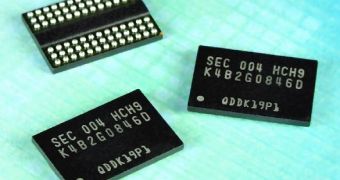It was hard to get an idea of just how severely the IT market was hurt by the disaster that hit japan on March 11, but it seems things are finally becoming clear, and they are looking none too well.
The one big problem in Japan, even now, is the ongoing crisis at the damaged nuclear power plant, in danger of reactor meltdown.
Meanwhile, authorities are pushing themselves to the limit in their effort to just cope with the huge death toll of over 18,000, while also dealing with the destruction everywhere.
Over the past week, speculations and estimates were given on just how severely the IT market was affected by the earthquake and tsunami.
Until a short time ago, the hard drive market was said to have been among the worst affected, what with factories being shut down and employees injured.
Now, however, iSuppli reports that it is, in fact, the chip industry that took the worst hit, as worldwide wafer production capacity was reduced by 25%. The global supply of memory chips will end up suffering the greater impact.
Ironically, this should finally enable vendors to start offering higher spot prices on DRAM chips, as they have been near a literal bottom for weeks.
Back in 2010, process advancements and unexpectedly weak (by comparison) demand led to oversupply of memory chips until prices got so low that 4 GB of RAM became standard (more or less) on new PCs.
Now that the production capacity is so severely impaired, quotes should start going up again, although this will no doubt not be an all that welcome change for buyers.
“A 25 percent reduction in supply could have a major effect on worldwide semiconductor production,” says iSuppli's press release.
The other, serious piece of news is that two companies that account for 70% of the worldwide printed circuit board (PCB) material supply stopped operation as well. If the interruption lasts any more than two weeks, even more problems will arise.

 14 DAY TRIAL //
14 DAY TRIAL //